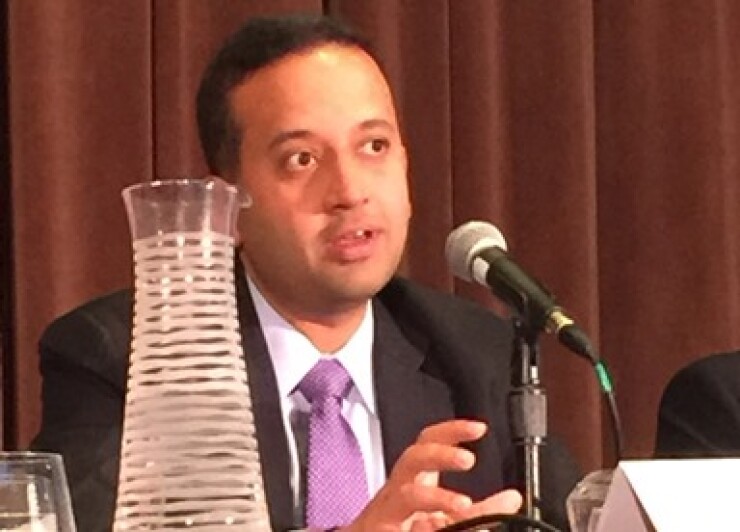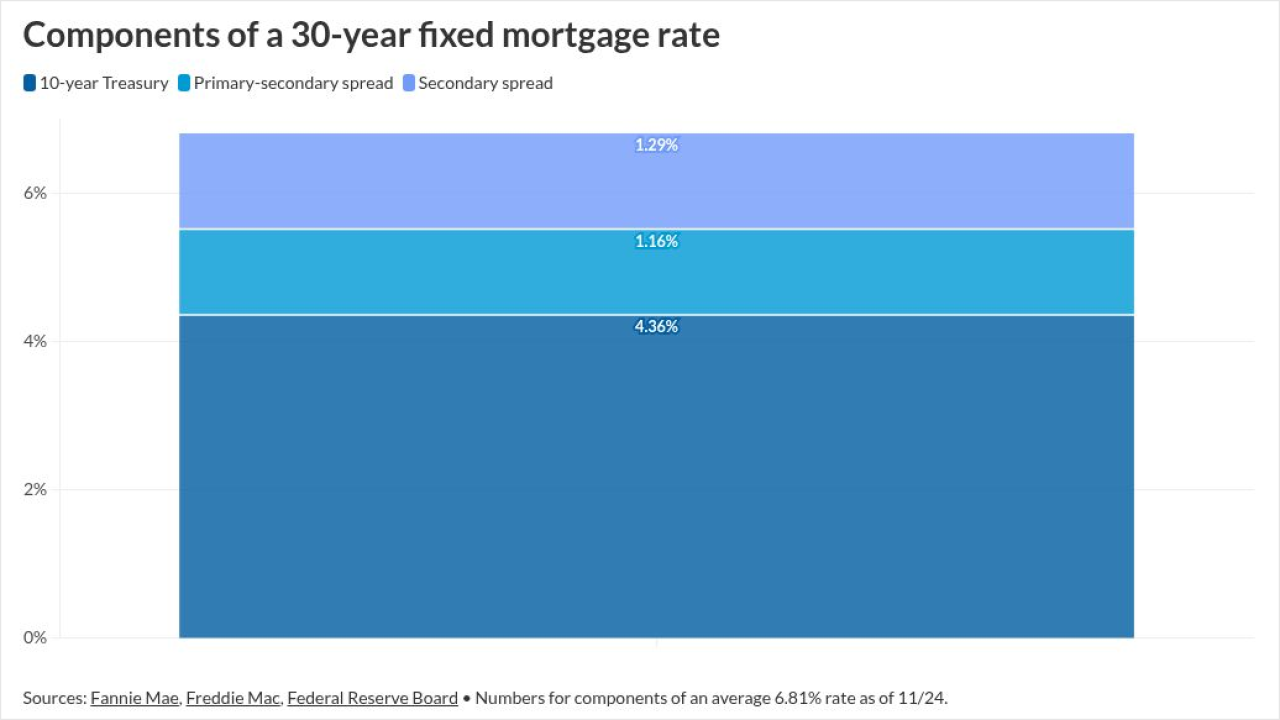As much as investors express concern over the credit quality of CLO portfolios, their appetite seems to be restrained only by empty shelves when they go shopping.
With new issuance of collateralized loan obligations surging over 90% above last year’s levels, it appears only the “technical constraints” of leveraged-loan supply and the inability to print enough paper is what is keeping some investors on the sideline.
“There’s probably enough capital to support the highest end of issuance [forecasts],” said Tom Majewski, founder and CEO of Eagle Point Credit Co., “but I don’t think there’s enough supply or infrastructure, frankly.”

Those forecasts run as high as $150 million for all of 2018, by Wells Fargo, which would be an increase of 25% over the roughly $120 million issued in 2017.
Majewski was among panelists addressing the quandary of CLO supply vs. demand at the 7th annual investors’ conference on leveraged loans and CLOs, hosted in New York by the Information Management Network.
The CLO market is on a record pace of $67.6 billion in total deals through May 23. But according to JPMorgan, only $113 billion of $392 billion of institutional loan issuance year-to-date has been with new loan activity needed to prime the deal pipeline for CLOs, which acquire about 60% of the loan market’s volume each year.
Not only is loan supply limited, but the current channels used to price deals – asset accumulation, warehousing and rating-agency review – is already running on all cylinders. At one point in Thursday’s discussion, Majewski joked that another Moody’s structured finance analyst Jian Hu should be “back at the office” rating deals rather than sharing a spot on the early morning panel.
But Hu was there to explain what could be a hindrance to new deals, should investors decide to take heed: collateral quality.
Hu said that while CLO and leveraged loan issuance are strong, there are “warnings signs” in the credit environment.
Those canaries in the coal mine include the falling recovery rate expectations resulting from more borrower-friendly loan terms that issuers are able to wring out of investors. Also involved are the rising loss-given-default rates (measurements of a bank’s loss after a loan default) that have been on the rise in the last seven years.
In addition, he said, are collateral quality test cushions involving weighted average life or minimum spreads have “eroded across all these metrics,” said Hu.
But the worries are not enough to keep the growing investor base of CLOs and loans at bay.
Another panelist, Amit Roy, the head of new-issue CLO strategy at Goldman Sachs, noted that while deal numbers are eye-popping, the headwinds against new issuance are growing. “The proportion of resets and reissues is much higher this year than it was last year,” when refis were mostly driven by strategies to avoid risk-retention triggers, Roy said. This year, by comparison, there are more resets, in which managers obtain new collateral in order to extend the lives of older deals. That puts the reset market in competition with primary issuers for loans, “so the supply pressure is even more acute.”




